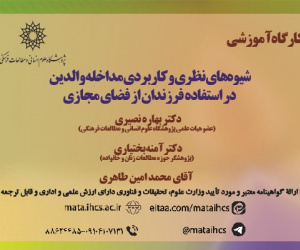آسیب شناسی انضباط ترافیکی موتور سیکلت سواران (مقاله علمی وزارت علوم)
درجه علمی: نشریه علمی (وزارت علوم)
آرشیو
چکیده
زمینه و هدف: با توجه به سنگینی روزافزون حجم ترافیک در کلان شهرها، رشد استفاده از موتورسیکلت و تخلفات ترافیکی آنان نیز افزایش یافته به طوری که موتورسیکلت سواران از جمله آسیب پذیرترین کاربران ترافیک به شمار می آیند. بنابراین هدف اصلی این پژوهش آسیب شناسی انضباط ترافیکی موتورسیکلت سواران می باشد. روش: این تحقیق از نظر هدف،کاربردی از نظر روش آمیخته از نوع اکتشافی است. جامعه آماری در بخش کیفی، اساتید دانشکده علوم و فنون پلیس راهور، متخصصان و خبرگان ستاد پلیس راهورفراجا و فرماندهان و سرکلانتران پلیس راهور تهران بزرگ به روش هدفمندِ مبتنی بر معیار و در بخش کمی جامعه آماری کارشناسان رسمی دادگستری و کارشناسان ارشد تصادفات پلیس راهور تهران بزرگ به روش طبقه ای ساده بود. جهت آنالیز داده ها در بخش کیفی از روش تحلیل تم با استفاده از نرم افزار MAXQDA2021 و در بخش کمی از تحلیل عاملی تأییدی جهت اعتبارسنجی مدل حاصل از بخش کیفی به روش مدل یابی معادلات ساختاری با استفاده از نرم افزارpls3 Smart بهره برداری شد. یافته ها: بیشترین آسیب انضباط ترافیکی موتورسیکلت سواران مربوط به زیرساخت های فنی بود. از طرف دیگر بارهای عاملی آسیب های ساختاری با مقدار948/0، آسیب های زمینه ای با مقدار946/0 و آسیب های رفتاری با مقدار785/0 بیشتر از 5/0 هستند که در سطح 95/0 معنی دار بودند. نتایج: بر اساس یافته های فوق، برنامه ریزی بر پایه دیدگاهی منتج از رفع آسیب های ساختاری، رفتاری و زمینه ای همچنین شناسایی آسیب های انضباط ترافیکی و کنترل هوشمند موتورسواران،می تواند باعث افزایش انضباط ترافیکی موتورسواران و ارتقاء ایمنی تردد آنان به عنوان آسیب پذیرترین قشر کاربران ترافیک و کاهش هزینه ها در ابعاد مختلف اقتصادی-اجتماعی گردد.Pathology of Traffic Discipline of Motorcycle Riders
Background and objectives: Due to the ever-increasing traffic volume in big cities, the growth of the use of motorcycles and their traffic violations has also increased, so that motorcycle riders are among the most vulnerable traffic users. Therefore, the main goal of this research is the pathology of traffic discipline of motorcycle riders.
Method: In terms of its objectives this study is of an applied research type, and exploratory mixed method. The statistical population in the qualitative phase is the professors of the Faculty of Science and Technology of the Traffic Police, the specialists and experts of the I.R.I. Traffic Police Headquarters and the commanders and chief sheriffs of the Tehran Metropolitan Traffic Police who were selected using a targeted method based on criteria, and in the quantitative phase, the statistical population is the official judicial experts and senior accident experts of the Tehran Traffic Police using a simple stratified sampling method. To analyze the data in the qualitative phase, the theme analysis method was employed using the MAXQDA 2021 software; and in the quantitative phase, the confirmatory factor analysis was employed to validate the model obtained from the qualitative phase, structural equation modeling method was used using Smart PLS3 software.
Findings: The biggest damage to the traffic discipline of motorcycle riders was related to the technical infrastructure. On the other hand, factor loadings of structural damages with a value of 0.948, background damages with a value of 0.946, and behavioral damages with a value of 0.785 are greater than 0.5, which were significant at the 0.95 level.
Results: Based on the above findings, planning based on a perspective resulting from the elimination of structural, behavioral and contextual damages, as well as the identification of traffic discipline damages and intelligent control of motorcyclists can increase the traffic discipline of motorcyclists and improve their traffic safety as the most vulnerable group of traffic users and reduce costs in different socio-economic dimensions.











